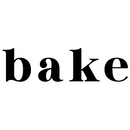Can Cookies Get Moldy?
In the world of baking and confectionery, the question of whether cookies can get moldy is a pertinent one. As purveyors of delicious treats, it's essential to understand the factors that contribute to the potential mold growth on cookies and how to prevent it. Let's delve into the details.
Understanding Mold Formation on Cookies
Mold growth on cookies primarily occurs due to moisture and the presence of mold spores. When cookies are exposed to humid environments or stored improperly, moisture can accumulate, creating an ideal breeding ground for mold. Additionally, airborne mold spores can settle on the surface of cookies, initiating mold growth under favorable conditions.
Factors Contributing to Mold Growth
Several factors influence the likelihood of cookies developing mold:
Ingredients
The ingredients used in cookie recipes play a crucial role in mold formation. Ingredients such as flour and sugar can harbor mold spores, especially if they are not stored properly. Additionally, ingredients with higher moisture content, like fruits or chocolate chips, can contribute to mold growth if not handled and stored correctly.
Storage Conditions
Proper storage is essential for preventing mold growth on cookies. Cookies should be stored in airtight containers in a cool, dry place to minimize exposure to moisture and mold spores. Avoid storing cookies in areas prone to humidity, such as near stovetops or in damp basements.
Duration
The length of time cookies are stored can also impact their susceptibility to mold. While freshly baked cookies are less likely to develop mold, prolonged storage increases the risk, especially if stored in inadequate conditions.
Preventive Measures
To ensure your cookies remain mold-free, follow these preventive measures:
Use Fresh Ingredients
Start with fresh, high-quality ingredients to minimize the risk of mold contamination from the outset.
Proper Storage
Store cookies in airtight containers immediately after they have cooled to room temperature. Consider adding silica gel packs to absorb any excess moisture inside the container.
Regular Inspection
Periodically inspect stored cookies for signs of mold growth. Discard any cookies that appear discolored or have an off-putting odor.
Consume Promptly
Enjoy your cookies promptly to reduce the likelihood of mold formation. While most cookies are best enjoyed within a few days of baking, freezing can prolong their shelf life.
Conclusion
In conclusion, while cookies can indeed get moldy under the right conditions, proactive measures can significantly reduce the risk. By understanding the factors contributing to mold growth and implementing proper storage and handling practices, you can enjoy delicious, mold-free cookies for longer periods. Remember to prioritize freshness and vigilance to maintain the quality and safety of your baked goods.
📍 Visit us: 6430 S Decatur Blvd #600, Las Vegas, NV 89118
📱 Shop Phone: 702-530-2336
🌐 Check out our variety: BakeTheCookieShoppe.com
Follow us on Instagram
Follow us on Tiktok








Leave a comment